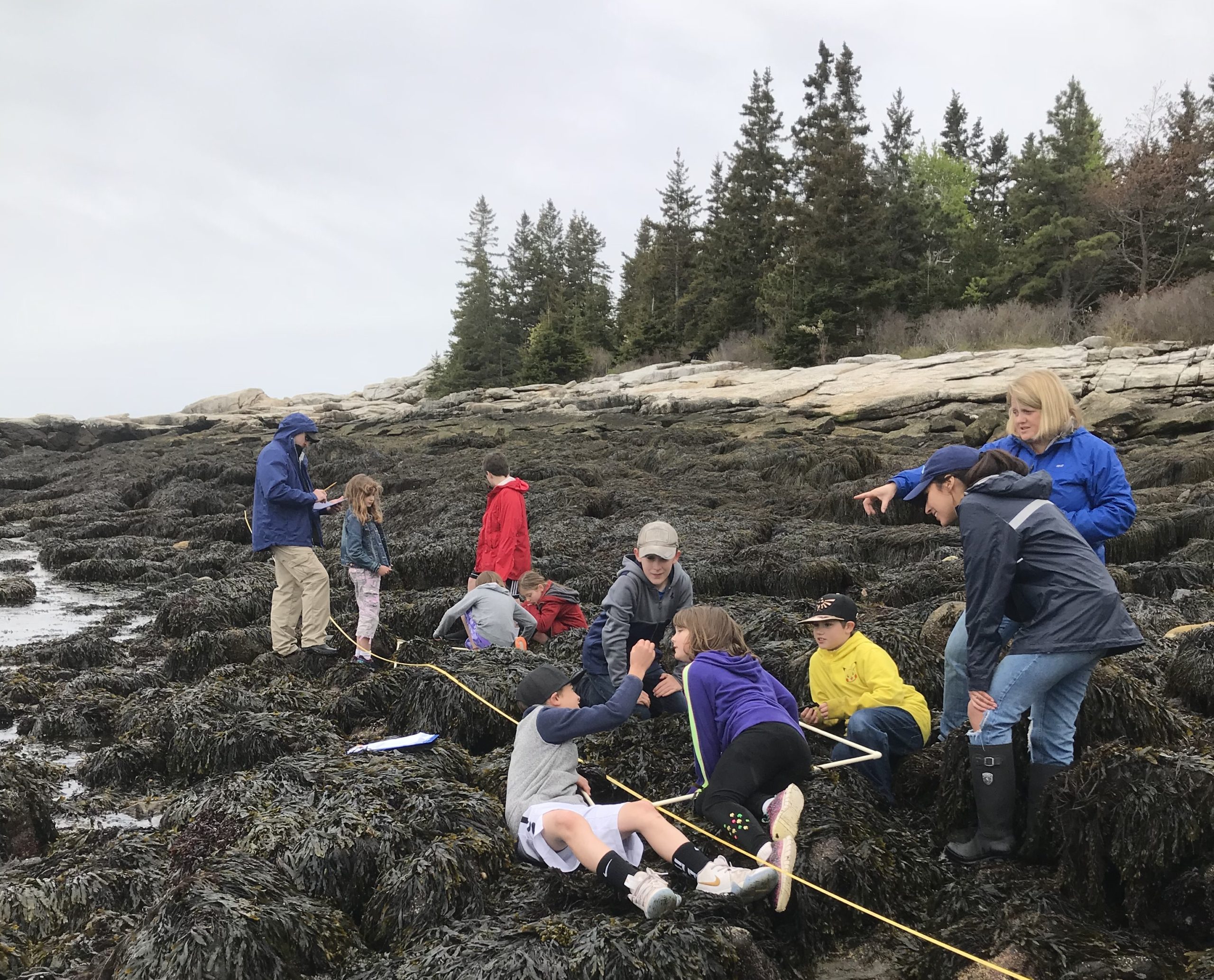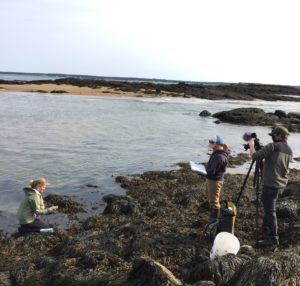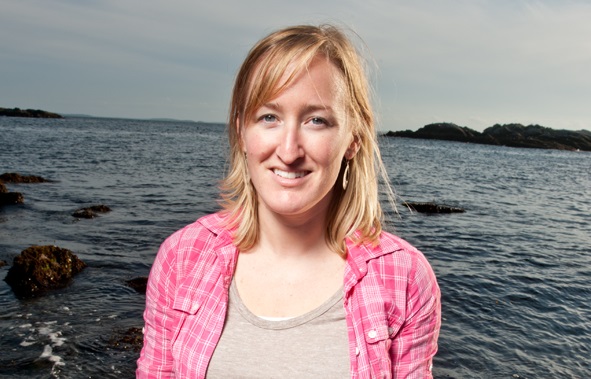While the pandemic disrupted some of our outreach work, Manomet’s green crab research continued this summer, especially focused on population monitoring.
Because of COVID-19, Manomet’s green crab population monitoring started in mid-May; normally, work begins in April. Social distancing is easy when measuring green crabs and recording data, so as soon as state regulations allowed, we started with our fieldwork for the season. In May, we saw higher intertidal densities and trap catch rates than we’d ever seen in any previous year at any time during the year. Typically, what we find in a normal year is a low abundance of green crabs in the spring, and then abundance gradually increases and peaks in the fall. This spring, we found higher catch rates and densities than we would normally find, even in the fall.
Clearly, something interesting was happening! We think it is a result of the mild winter that we had in the Northeast, as well as continued ocean warming in the Gulf of Maine. Warm water temperatures and mild winters are favorable for green crab growth and survival. Populations leveled off as the summer went on and we are back to normal rates of green crab abundance. The data is not final and surveys will continue until October, but it appears that green crab counts were up by as much as 176% in some areas this spring compared to 2019.

We also saw a resurgence of native crab populations at some of our intertidal monitoring sites. At one site that Manomet monitors, we found almost as many native rock and Jonah crabs as invasive green crabs. This is encouraging because both crab species support commercial fisheries and have ecological and economic significance.

When Manomet’s green crab research began in 2017, we planned to develop a standardized protocol for monitoring green crabs in the intertidal that could encompass a wide range of different metrics and inform conservation and fishery development efforts. This summer, the Journal of Visualized Experiments, a peer-reviewed scientific journal, published the protocol. This green crab protocol, which includes a ten-minute video, will be a really useful research tool that is user-friendly for a broad range of groups, including citizen scientists, students, educators, and researchers.
We also launched the protocol on Anecdata, a free online platform that provides individuals and organizations with web-based and mobile solutions for gathering and accessing observations. This is a very user-friendly way to collect, analyze, and input data and to look at trends in green crab populations. With most schools limiting or eliminating field trips this year, we hope this is a way to continue our work with students, parents, and educators.
 Finally, Manomet’s Fisheries Division is pleased to have an intern working with us this fall and assisting with our green crab monitoring. Isabella Monboquette is an undergrad student at the University of Maine Farmington studying environmental policy and planning. Welcome Isabella!
Finally, Manomet’s Fisheries Division is pleased to have an intern working with us this fall and assisting with our green crab monitoring. Isabella Monboquette is an undergrad student at the University of Maine Farmington studying environmental policy and planning. Welcome Isabella!





 Back to all
Back to all
